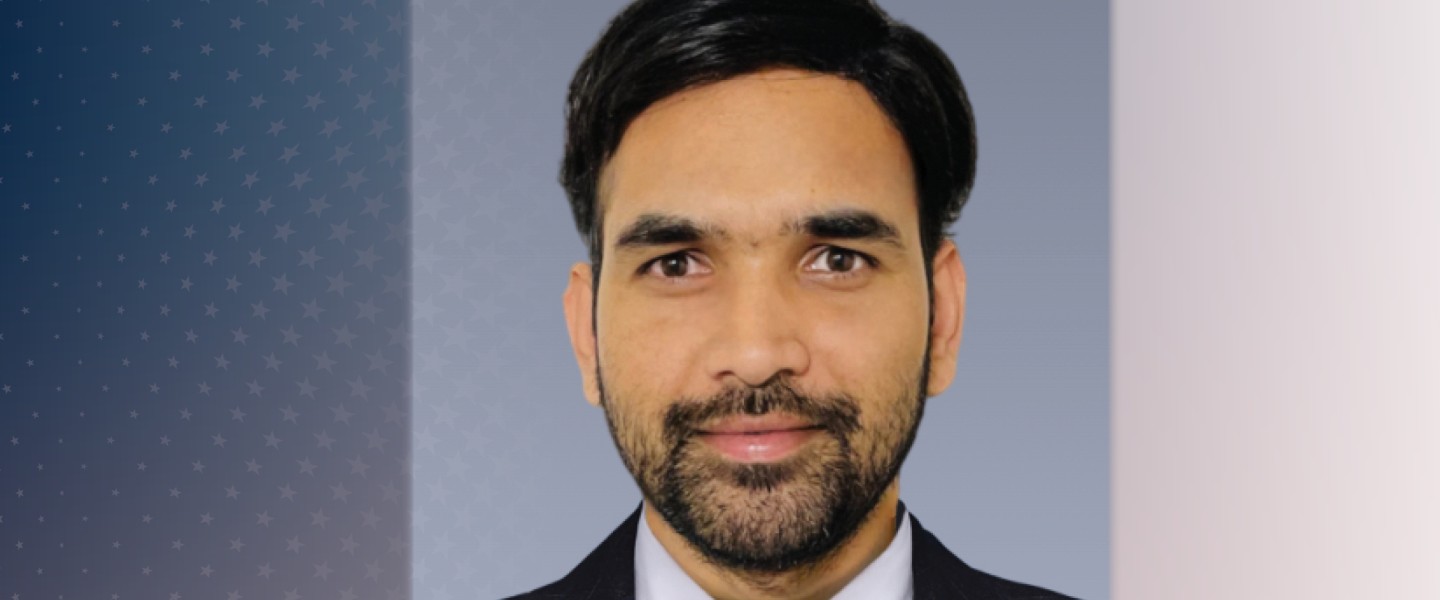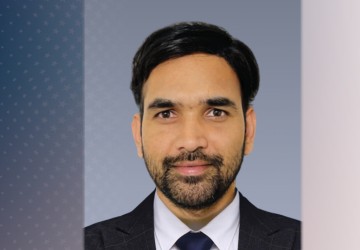Vinay Kumar Gugueoth, a student pursuing a PhD in information technology at University of the Cumberlands, was named Scientist of the Year for 2023 by the International Achievement Research Center.
Vinay said, “Receiving the award was a culmination of my involvement in three impactful research projects, each made possible through collaboration and support from esteemed partners and sponsors.”
Beyond receiving the 2023 Scientist of the Year award, he has been honored with a valuable “fellowship” by the British Computer Society (BCS), achieved the title of Certified Information Security Manager, received membership into Sigma Xi (scientific research honor society), and been granted senior membership by the Institute of Electrical and Electronics Engineers (IEEE).
Vinay noted that during his ongoing PhD education at Cumberlands he has received valuable support from Dr. Ulrich Vouama, Dr. Lauren VanTalia, and Dr. Orellana Franklin, for which he is very grateful.
Three different projects Vinay conducted were the basis of the International Achievement Research Center’s choice for him to receive the 2023 Scientist of the Year award. He unpacked his experiences with those projects, as well as discussed how he became interested in IT and his upcoming IT and career goals.
Q: Who did you work with on these projects?
Vinay: For the first and second projects, I had the privilege of collaborating with professors Dr. Sachin Shetty and Dr. Danda Rawat, as well as research scientist Dr. Sunitha Safavat from Howard University, who received substantial research funding from the U.S. Department of Defense for research lab. Given the high costs associated with publishing research in top journals, collaborating with Dr. Shetty and Dr. Safavat was a strategic decision. But gaining acceptance into their team was no small feat; it required navigating multiple rounds of interviews and a rigorous selection process. Nonetheless, their expertise, resources, and funding support enabled us to conduct in-depth investigations into Iot security and the integration of blockchain technology. Together, we produced research outputs that not only contributed to the academic discourse but also held practical implications for real-world applications.
Q: Tell us about the first project.
Vinay: The first project focused on addressing the pressing need for robust security frameworks in IoT systems. Understanding the dynamic and distributed nature of IoT, our team explored the potential of machine learning (ML) algorithms in fortifying security measures. Through a detailed analysis, we highlighted the advantages and limitations of various ML algorithms, emphasizing their computational overhead and privacy risks. To mitigate these challenges, we proposed leveraging federated learning (FL) and deep learning (DL) techniques, which not only maintain data privacy but also facilitate information sharing among systems, thus presenting a promising avenue for bolstering IoT security.
Q: What was the focus of the second project?
Vinay: In the second research project, we tackled the intricate security issues plaguing IoT systems by investigating the integration of blockchain technology. With IoT advancements amplifying security threats and privacy concerns, our review meticulously examined the landscape of security threats, presenting blockchain as a potential solution. We elucidated the intricacies of integrating blockchain with IoT, including consensus protocols, security characteristics, and associated challenges. Furthermore, our analysis extended to existing security techniques, evaluation parameters, and unexplored research opportunities, laying a solid foundation for future advancements in the field.
Q: Please tell us about the third project.
Vinay: The third project, sponsored by my employer Amazon Web Services, focused on enhancing the efficacy of cloud VPN gateways. Leveraging the resources and expertise available through Amazon Web Services, we developed a Secure Cloud VPN Gateway with Network Monitoring and Issue Resolution framework. The third project centered on enhancing the efficacy of cloud VPN gateways through innovative solutions. Recognizing the limitations of existing gateways in monitoring and resolving network connectivity and performance issues, we proposed a Secure Cloud VPN Gateway with Network Monitoring and Issue Resolution framework. Our approach involved preprocessing VPN raw log data using Apache Spark, extracting patterns with the KMP technique, and clustering anomalies with RADFCM. Additionally, we utilized LPMLP classification for issue recommendation, while leveraging time series features and PCC-based correlation analysis. Through rigorous experimental evaluation, we demonstrated the efficiency of our framework, underscoring its potential to address critical challenges in cloud network security.
Q: Is there anything you would like to add?
Vinay: In each of these projects, collaboration played a pivotal role in our success. Working alongside renowned experts and industry leaders allowed me to leverage their insights, resources, and funding support to advance our research endeavors. The recognition of receiving the Scientist of the Year award is a testament to the collective efforts and contributions of all involved parties in pushing the boundaries of scientific inquiry and technological innovation.
Q: Have you worked on any other substantial projects?
Vinay: Yes, but it cannot be disclosed yet.
Q: How did you become interested in IT when you were younger?
Vinay: My interest in IT began at a young age, sparked by a natural curiosity and fascination with technology. Growing up in an era where computers were becoming increasingly prevalent in everyday life, I was drawn to the endless possibilities they offered for creativity, problem-solving, and innovation.
I vividly remember my first encounter with a computer, and from that moment on, I was hooked. I spent countless hours exploring its capabilities, tinkering with software, and learning how to navigate the digital world. Whether it was playing educational games, experimenting with coding, or troubleshooting hardware issues, I found joy in every aspect of the technology.
As I delved deeper into the world of IT, I became captivated by its dynamic nature and its potential to transform industries, improve efficiency, and empower individuals. The more I learned, the more I realized the vast scope of possibilities within the field — from software development and network security to data analysis and artificial intelligence.
Moreover, witnessing the rapid pace of technological advancement and its profound impact on society further fueled my passion for IT. I was inspired by the innovative solutions being developed to address complex challenges and improve people's lives.
Ultimately, my early interest in IT was driven by a combination of curiosity, fascination, and a desire to make a positive impact through technology. This passion has continued to guide me throughout my academic and professional journey, shaping my career path and motivating me to continually expand my knowledge and skills in the ever-evolving field of information technology.
Q: What are your goals for the future, related to your IT research and career?
Vinay: My goals for the future are deeply rooted in advancing both my IT research and career to new heights, while making meaningful contributions to the field. Here are some of my key aspirations:
Continued Research Excellence: I aim to further contribute to cutting-edge research in IT, particularly in areas such as cybersecurity, artificial intelligence, and data analytics. By pushing the boundaries of knowledge and innovation, I seek to address emerging challenges and drive positive change in the industry.
Publication in Top Journals and Conferences: I aspire to publish my research findings in leading academic journals and present them at prestigious conferences. By disseminating my work to a wider audience, I aim to foster collaboration, inspire others, and contribute to the collective advancement of IT knowledge.
Industry Impact: I am committed to translating my research into practical solutions that have a tangible impact on industry practices and technologies. Whether through the development of innovative software tools, the implementation of robust security measures, or the optimization of IT infrastructure, I strive to enhance efficiency, security, and effectiveness in real-world applications.
Leadership and Mentorship: As I progress in my career, I aspire to take on leadership roles where I can guide and inspire others in the field of IT. Whether through mentoring aspiring researchers and professionals, leading interdisciplinary teams, or advocating for diversity and inclusion, I aim to cultivate a culture of excellence and collaboration.
Continuous Learning and Growth: In the rapidly evolving landscape of IT, lifelong learning is essential. I am committed to staying abreast of the latest advancements, acquiring new skills, and embracing emerging technologies. By embracing a growth mindset and remaining adaptable, I seek to thrive in an ever-changing environment and contribute to the forefront of technological innovation.

